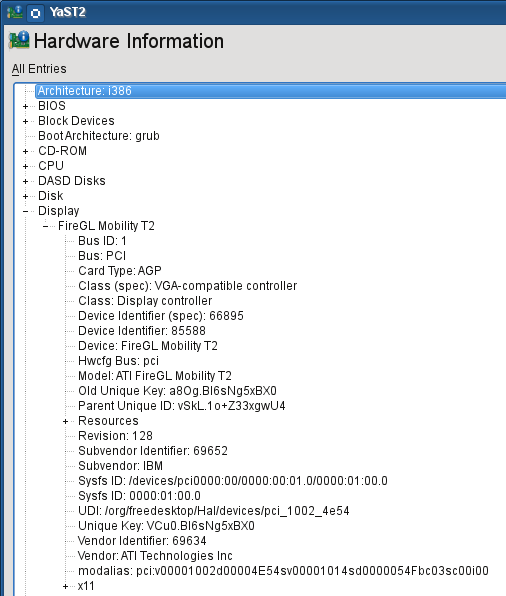Spike on IRC was commenting about how much of a pain in the arse it is to track down drivers for unknown hardware on Windows, and how easy it is under Linux using lspci. I sat and thought about it – lspci can’t possibly pluck hardware strings from nowhere, there has to be some sort of database… and there is, and best of all there’s a web-based front end to it.

So here’s how to do it yourself in a few easy steps… first, right-click My Computer and choose properties. Then, go to the Hardware tab, and pick Device Manager.
Navigate to your unknown device, double-click it and then pick the Details tab. Find the Hardware Ids entry, and look for the most detailed entry. My shitty SiS network adaptor’s is “PCIVEN_1039&DEV_0900“.
Navigate to the PCI Devices database in a browser on an internet-connected computer. In my case, I’m looking for vendor ID 1039, so I’ll click “1” and scroll down… and I’ll find the Vendor “Silicon Integrated Systems [SiS]”, which is to be expected. Click into the Vendor entry and look for the Device ID.
- Start Windows 10 PowerShell As Administrator. Step 2: Get Network Adapter Link Speeds – PowerShell has a “Get-NetAdapterHardwareInfo” feature. Copy and paste that in PowerShell and you should see all network connections enumerated. One of the Columns is PcieLinkSpeed. Get Network Adapter Link Speed Windows. Here is a handy table that will.
- Using WSL has taken away the pain of programming on Windows, so comparisons between Windows and Mac feel more like apples-to-apples as a CS major. I have a MacBook Pro with 16 inches with core i9, 32GB ram, 2TB SSD running Big Sur and a Surface Book 3 with 15-inch core i7, 32GB ram, 1TB SSD running Win 11, both less than 4 months old.
Lspci On Windows
Lspci On Windows Code
Below is a list of frequently asked questions (FAQ) about the Windows Subsystem for Linux 2. Does WSL 2 use Hyper-V? Will it be available on Windows 10 Home? WSL 2 is available on all Desktop SKUs where WSL is available, including Windows 10 Home. The newest version of WSL uses Hyper-V architecture to enable its virtualization. FYI: lshw, lspci, lsusb, etc. Are all available from external sources too. – voices Mar 13 '17 at 9:59 1 @tjt263, right, there are both macOS ports of pciutils and libusb (I suspect that lspci and lsusb are included in the respective source trees as examples/handy utils). PCI-Z is designed for detecting unknown hardware on your Windows based PC. It will help you determine vendor, device and certain details about device even if you don't have drivers installed. Software uses The PCI ID Repository, a public repository of all known ID's used in PCI devices: ID's of vendors, devices, subsystems and device classes.
Lspci On Windows 8
That should hopefully give you the correct Google-snacks to track down a driver for the hardware. 😀